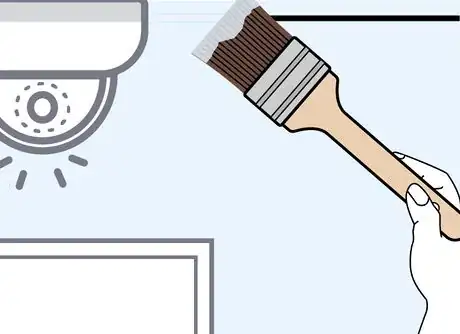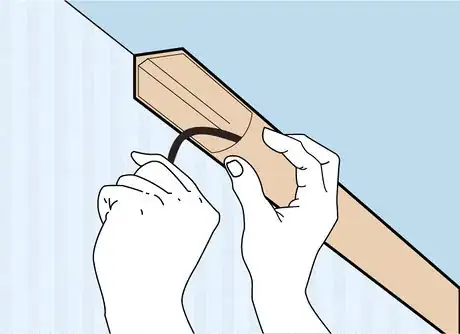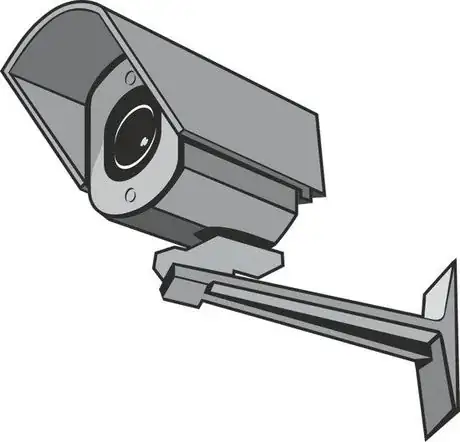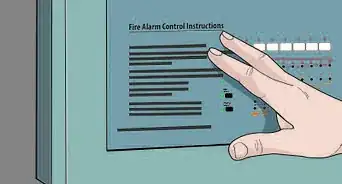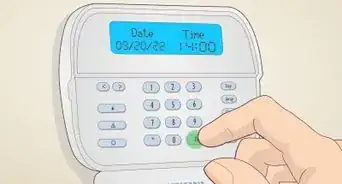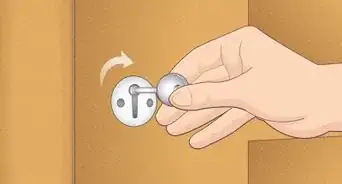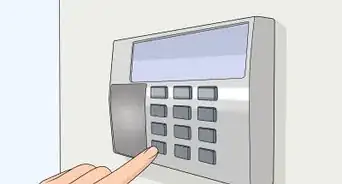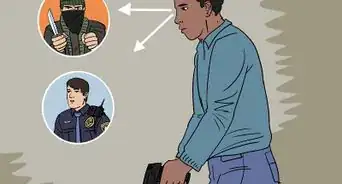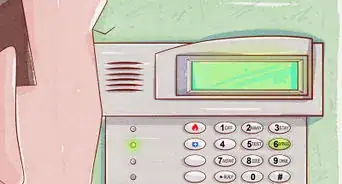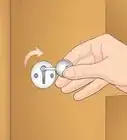This article was co-authored by Christopher Lanier. Christopher Lanier is a handyman and the owner and operator of Watson & Company Handiworks, a handyman business in Austin, Texas. With over three years of experience, Christopher specializes in outdoor light installation, furniture assembly, TV mounting, and window treatment installation. Christopher holds a Bachelor’s degree in Business Administration from the University of Texas at Austin. Watson & Company Handiworks is rated as a Top Pro by Thumbtack.
This article has been viewed 45,777 times.
Dangling and exposed security camera wires can not only break the décor of your home, but also offer a good opportunity for thieves to disconnect your cameras by cutting the hanging cables. Luckily, there are many simple and inexpensive ways for you to hide the security camera wires inside and outside, so as to protect your camera systems from vandalism and extend the lifespan of the security camera cabling.
Steps
-
1Paint the security camera wires. The easiest way to hide security camera wires outside is to make them blend into the environment. Staple the cables to the walls with a staple gun and paint the wires the same color as the walls. In doing so, the security camera wires will be more unnoticeable by the intruders from a distance.
- A similar option would be to use a cord cover. If you can find a cord cover that matches your walls perfectly, things would be much easier and you wouldn’t need to go through the effort of painting the wires or cover for concealment.
-
2Hide wires within the baseboards. Baseboards are the narrow wooden boards running along the lowest part of the wall. This method is especially easy to employ if you have enough doorways in your home.
- Remove the baseboards and fish the cables in the gap between the wall and the floor. Afterwards, make sure the wires are in place and put the baseboards back.
- Besides the baseboards, it also proves to be feasible to hide the security camera wires inside behind some large pieces of furniture, such as the bookshelves and mantels, or under the carpet.
- You can plan the wiring route first and then fasten the hanging wires with binder clips behind the nearby pieces, like the bookshelves.
Advertisement -
3Use a plastic tube. Another effective method to hide the security camera wires outside is feeding the cables through walls in a plastic tube, which also helps protect the cables from harsh weather conditions and external damages.
- This method involves drilling through studs and threading the tube, which might be complex if you're not a tech savvy person. So, contact an experienced installer if you find it beyond your capability to do on your own.
- Also note that the wires will be almost inaccessible in case of power failure, unless you seek professional help.
-
4Run wires through the walls/ceilings. If the security camera power source or monitor happens to be on the other side of the wall or ceiling from the camera, you can just drill holes in the wall and thread the wires through the holes to your camera. In this way, the camera will be visible but the wires will be concealed.
- Turn off the power source before you set off to run security camera wires so as to protect your personal safety and avoid your camera being damaged.
- Drill holes in the position where the outlet or monitor will be, and use a straightened metal coat hanger to examine inside the wall for any unforeseen obstructions.
- Feed the wires through the walls or ceilings to where you need them to go.
-
5Install a completely wireless security camera. The wire-free security cameras, powered by batteries or solar panels, can free you from messy cables and tough installation processes.
- Remember that wireless security cameras are not always wire-free. You’ll also need to run wires to power the plugged-in wireless IP cameras.
Community Q&A
-
QuestionIs it usual to leave a pile of wires in a corner of a lounge when you have had a security camera fitted?
 Dave GrayCommunity AnswerIf it's just wire not connected to anything, then it may be leftover lengths of wire from the install. If it's live wire, then no. Electrical wires need to be managed properly to avoid damage to the device and safety hazards.
Dave GrayCommunity AnswerIf it's just wire not connected to anything, then it may be leftover lengths of wire from the install. If it's live wire, then no. Electrical wires need to be managed properly to avoid damage to the device and safety hazards.
